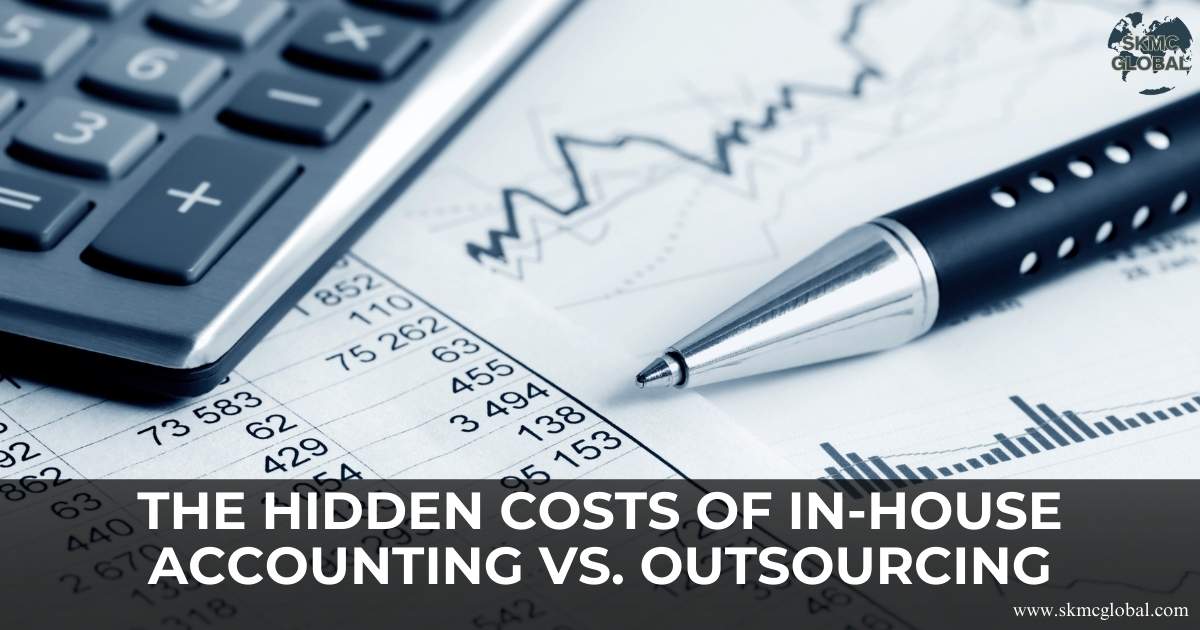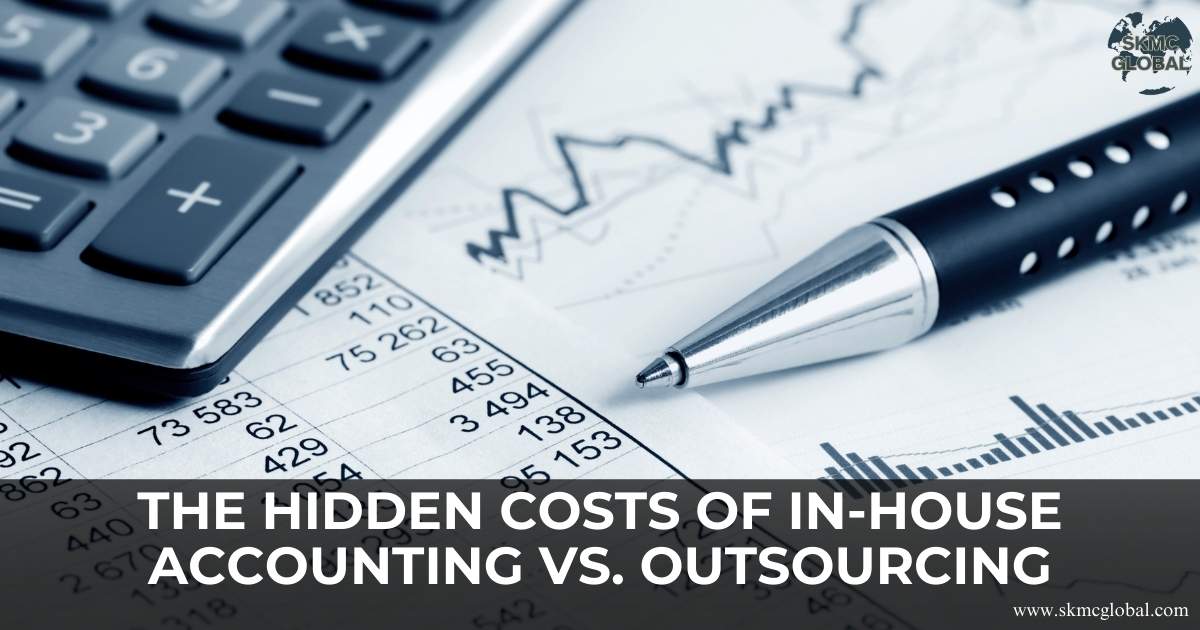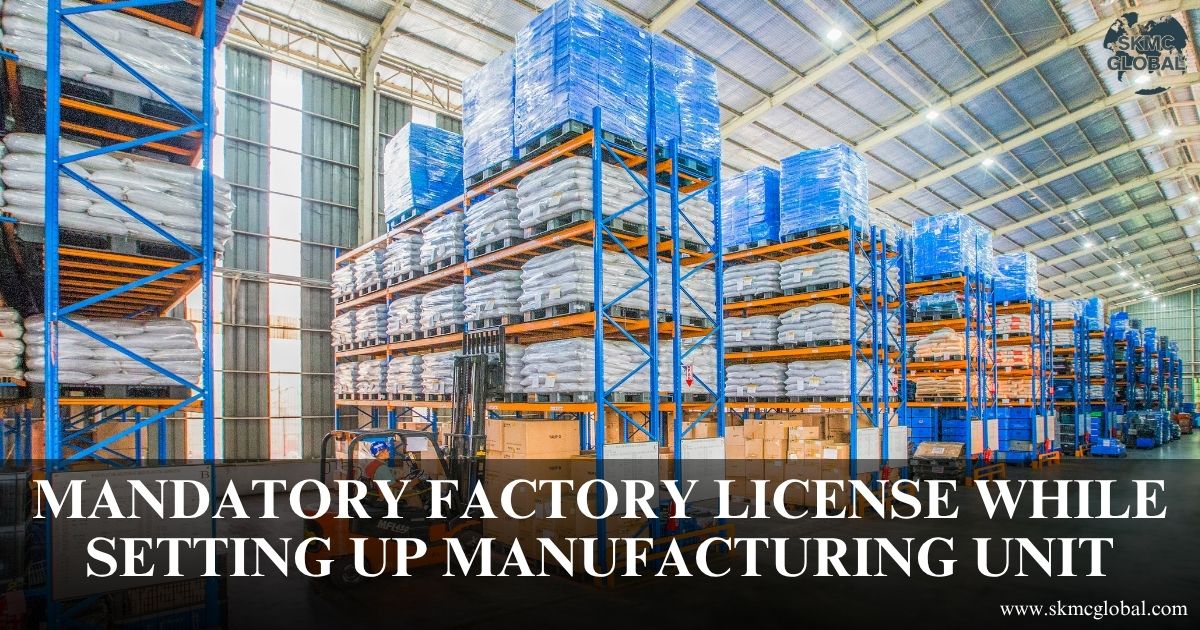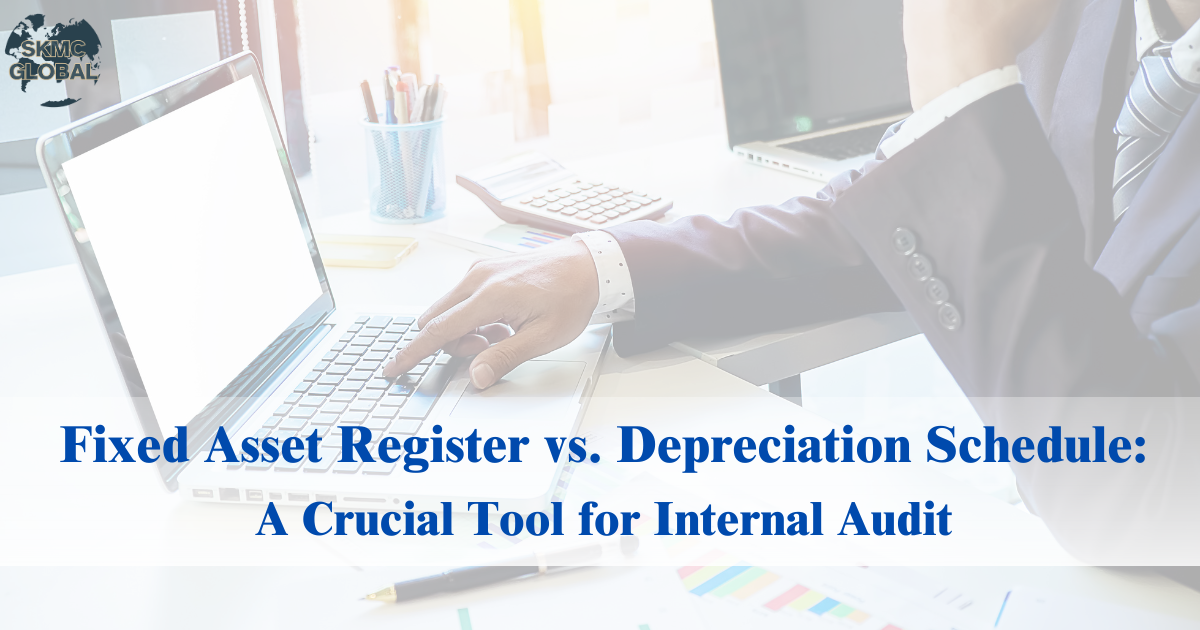
Introduction: Why Businesses Re-Evaluate Accounting Models
Every business, startup or old business, needs a good accounting system. Firms in the past utilized internal accountants to process payroll, prepare taxes, and provide financial reports. In recent years, however, most businesses have started looking towards outsourced accountancy services to save and improve efficiency. The most common theme of the discussion is the necessity to save dollars in initial expenses, but lost in the conversation is the elusive cost of in-house accounting and the buried benefits of outsourcing. Carefully gauging these models, organizations stand a better chance of making good long-term decisions that would serve to maximize their wealth and growth objectives. The True Costs of In-House Accounting
On the surface, it seems easy to use an in-house accounting team—after all, they're inside the business, there all the time, and easily accepting of company culture. But behind the scenes, the unseen costs quickly add up.
Pay and compensation are the most glaring. A certified public accountant can look forward to competitive salaries, medical benefits, pension investment, and possibly even bonuses. But that's just the beginning. The firm also must pay for accounting packages, licenses, training, office equipment, and computer hardware. These overheads may run into thousands of dollars per year.
Consider a medium-sized factory business with two accountants as staff. In addition to salary, the business has another 20% annually in training and software maintenance. These aren't usually factored into start-up estimates, but certainly take a toll on profitability. Outsourced accounting eliminates these sorts of fixed expenses, offering expertise and high-end capabilities for a fraction of the expense.
Another hidden cost is employee turnover. Accountants have a tendency to take their work elsewhere. Replacing them requires recruitment, induction, and re-induction, which not only is costly but also disrupts the flow of work. Organizations relying exclusively on in-house staff are particularly vulnerable to such fluctuations. Outsourced accountancy services, however, provide continuity of skills without risk of turnover to the business.
Outsourced Accountancy Services: A Strategic Alternative
Outsourcing is more than a cost-cutting exercise—it's an opportunity to utilize expert skill and scalable solutions. By using outsourced accountancy, business organizations can gain access to an array of resources of specialists with varied industry exposures, recent familiarity with regulatory platforms, and sophisticated technology tools.
For instance, a chain of restaurants covering a number of states has to contend with complex tax plans. A spiral series of legislative revisions can cause an in-house accountant to lose sleep. By engaging outsourced accountancy, the company can access experts who have a grasp on compliance at the state level, thus avoiding mistakes and fines.
In addition, outsourcing also provides access to new computer technology and AI analytics without significant capital expense on the part of the company. This evening of high-level technology allows small businesses to compete more effectively with larger business.
Hidden Costs of In-House Accounting: Case-Based Insights
Let us consider an example. A technology start-up had decided to maintain its books in-house with a limited accounting team. It thought that this step would be cost-saving, with salaries predetermined, and control was expected to be greater. Two years down the line, the start-up was struggling:
- The accountants were not globally tax-aware when the company went international to find clients. This resulted in ineligible submissions and a tax penalty of nearly ₹10 lakhs.
- The accounting personnel asked for expensive software revisions for handling multi-currency transactions, but another surprise cost.
- One of the senior accountants quit during the year-end reporting season, and the management was forced to compensate an employment agency in a bid to hire someone as fast as they could.
These hidden expenses severely affected the startup's cash flow. In hindsight, hiring outsourced accountancy services would have put an end to such risks through providing seasoned expertise, access to advanced software, and safe continuity.
Outsourced Accountancy Services in Action: Real-Life Examples
Maybe the best case to be made for outsourcing is the way it re-arranges the cost dynamics of businesses across various industries.
Take the example of an Indian mid-sized e-commerce firm.
These examples identify the fact that not just is outsourcing cost-effective but also increases decision-making capability through the offering of money information backed by professionals.
Long-Term advantages of Outsourcing vs. In-House Accounting
The two traits are simpler to compare when one thinks about them in the long run. In-house accounting can appear to offer firms more control, but this locks companies into fixed costs. Nonetheless, outsourced accountancy services turn these fixed costs into variable costs and enhance cash flow flexibility. Another long-term benefit is risk management and compliance. Taxations and legislations are periodically changed. Defaulting attracts gigantic fines and besmirches one's reputation. Third-party accounting services maintain their methods updated from time to time to predict changes in law so that businesses can remain in compliance without having to adopt each change themselves.
Further, outsourcing reduces dependency on certain employees. Internal accountants can be absent sick, on leave, or resigning, and thus bring the operation to a halt. Outsourced accounting services, however, employ groups of professionals, with no downtime in the services. Such reliability is particularly crucial when high stakes are at play such as year-end reports or audits.
Secondly, outsourcing allows businesses to focus on their core business. A healthcare company, for example, should be putting its capital toward patient care instead of worrying about the details of accounting. Accounting services provided by outsourced groups also free up management bandwidth so executives can focus on strategic and not administrative issues.
Conclusion: Taking the Smarter Route
It is easy to overlook the clandestine costs of having an in-house staff while companies make the choice in favor of in-house accounting or outsourcing depending on pros and cons. Recruitment, software expense, training, regulatory mistakes, and employee turnover bring layers of cost and risk.On the other hand, outsourced accounting offers a more flexible, less expensive, and professionalized option. From enhanced compliance and risk management to scalability and enhanced access to advanced tools, outsourcing makes accounting a strategic asset rather than an operational chore.
Firms that have outsourced accounting functions successfully cite not only cost savings but enhanced financial transparency and decision support as benefits. The actual hidden expense, however, lies not in outsourcing but in an inability to relinquish an outmoded in-house accounting paradigm constricting firm flexibility and subjecting firms to undue risk.
As competition within markets increases and there is greater complexity in regulations, the more prudent path for most organizations is to embrace outsourced accountancy service solutions to open doors to long-term financial stability, solidity, and expansion.
Recent Posts
-
 Applicability of Ind AS vs Indian Accounting Stand...
Nov 11,2025
Applicability of Ind AS vs Indian Accounting Stand...
Nov 11,2025
-
 Public vs. Private Trust: key Differences in Regis...
Oct 28,2025
Public vs. Private Trust: key Differences in Regis...
Oct 28,2025
-
 Donation and Foreign Contributions to Trusts in In...
Oct 23,2025
Donation and Foreign Contributions to Trusts in In...
Oct 23,2025
-
 Redeemable Preference Shares as a Financial Tool...
Oct 22,2025
Redeemable Preference Shares as a Financial Tool...
Oct 22,2025
-
 STPI Unit and Non-STPI Unit...
Oct 16,2025
STPI Unit and Non-STPI Unit...
Oct 16,2025
-
 Country-by-Country Reporting (CbCR) and Its Evolvi...
Oct 09,2025
Country-by-Country Reporting (CbCR) and Its Evolvi...
Oct 09,2025
-
 What is Free Trade Agreement and Certificate of Or...
Oct 08,2025
What is Free Trade Agreement and Certificate of Or...
Oct 08,2025
-
 What is the relevance of status holders certificat...
Oct 06,2025
What is the relevance of status holders certificat...
Oct 06,2025
-
 Redemption of Advance Authorization under Foreign ...
Oct 04,2025
Redemption of Advance Authorization under Foreign ...
Oct 04,2025
-
 What is provisional assessment of Bill of Entries ...
Sep 29,2025
What is provisional assessment of Bill of Entries ...
Sep 29,2025
-
 Redemption of EPCG License...
Sep 26,2025
Redemption of EPCG License...
Sep 26,2025
-
 MOOWR (Manufacturing and Other Operations in Wareh...
Sep 24,2025
MOOWR (Manufacturing and Other Operations in Wareh...
Sep 24,2025
-
 Procedure to Apply SCOMET License...
Sep 22,2025
Procedure to Apply SCOMET License...
Sep 22,2025
-
 Landscape of Semiconductor Industry while Doing Bu...
Sep 18,2025
Landscape of Semiconductor Industry while Doing Bu...
Sep 18,2025
-
 The Hidden Costs of In-House Accounting v/s Outsou...
Sep 17,2025
The Hidden Costs of In-House Accounting v/s Outsou...
Sep 17,2025
-
 TDS on sale of immovable property by an nri...
Sep 10,2025
TDS on sale of immovable property by an nri...
Sep 10,2025
-
 Setting up a Project Office in India...
Sep 08,2025
Setting up a Project Office in India...
Sep 08,2025
-
 Tax Implication for Transferring NRO Funds to NRE ...
Sep 05,2025
Tax Implication for Transferring NRO Funds to NRE ...
Sep 05,2025
-
 How outsourcing CFO services helps the corporates ...
Aug 27,2025
How outsourcing CFO services helps the corporates ...
Aug 27,2025
-
 Why a Periodical Cash Flow Statement is Necessary ...
Aug 26,2025
Why a Periodical Cash Flow Statement is Necessary ...
Aug 26,2025
-
 What is FATCA and CRS reporting and its difference...
Aug 22,2025
What is FATCA and CRS reporting and its difference...
Aug 22,2025
-
 What are unclaimed TDS Credits and how to claim it...
Aug 21,2025
What are unclaimed TDS Credits and how to claim it...
Aug 21,2025
-
 Digital Taxation is reshaping Tax Nexus Between Ju...
Aug 20,2025
Digital Taxation is reshaping Tax Nexus Between Ju...
Aug 20,2025
-
 Procedure to Take PF Registration and Its Complian...
Aug 18,2025
Procedure to Take PF Registration and Its Complian...
Aug 18,2025
-
 Procedure to take PSARA License...
Aug 11,2025
Procedure to take PSARA License...
Aug 11,2025
-
 Mandatory factory license while setting up manufac...
Aug 08,2025
Mandatory factory license while setting up manufac...
Aug 08,2025
-
 Procedure for obtaining NBFC Registration in India...
Aug 04,2025
Procedure for obtaining NBFC Registration in India...
Aug 04,2025
-
 FSSAI License registration for Food Business...
Jul 14,2025
FSSAI License registration for Food Business...
Jul 14,2025
-
 How Management Information System (MIS) reporting ...
Jul 11,2025
How Management Information System (MIS) reporting ...
Jul 11,2025
-
 IFRS 9 impairment- A complete guide...
Jul 12,2025
IFRS 9 impairment- A complete guide...
Jul 12,2025
-
 Why most of the companies are shifting to hr and p...
Jul 10,2025
Why most of the companies are shifting to hr and p...
Jul 10,2025
-
 A complete guide on valuation of shares...
Jul 10,2025
A complete guide on valuation of shares...
Jul 10,2025
-
 BIS registration for foreign manufacturer...
Jul 09,2025
BIS registration for foreign manufacturer...
Jul 09,2025
-
 Understanding the Scope of the Shops and Establish...
Jul 08,2025
Understanding the Scope of the Shops and Establish...
Jul 08,2025
-
 Coso framework: Complete guide on internal control...
Jun 26,2025
Coso framework: Complete guide on internal control...
Jun 26,2025
-
 Components and Process for Conducting Internal Aud...
Jun 25,2025
Components and Process for Conducting Internal Aud...
Jun 25,2025
-
 What is ICFR and Why It is Important for Businesse...
Jun 24,2025
What is ICFR and Why It is Important for Businesse...
Jun 24,2025
-
 Understanding WPC Certification and its applicabil...
Jun 23,2025
Understanding WPC Certification and its applicabil...
Jun 23,2025
-
 Procedure to take EPR registration for battery was...
Jun 21,2025
Procedure to take EPR registration for battery was...
Jun 21,2025
-
 3PL Logistics...
Jun 19,2025
3PL Logistics...
Jun 19,2025
-
 What is E-Waste and role of EPR in Waste Managemen...
Jun 17,2025
What is E-Waste and role of EPR in Waste Managemen...
Jun 17,2025
-
 M&A Due Diligence in India: How to Spot Target Com...
Jun 16,2025
M&A Due Diligence in India: How to Spot Target Com...
Jun 16,2025
-
 BIS crs certification for electronic products...
Jun 12,2025
BIS crs certification for electronic products...
Jun 12,2025
-
 All you need to know about WPC ETA certification f...
Jun 11,2025
All you need to know about WPC ETA certification f...
Jun 11,2025
-
 What is CDSCO Registration under The Drugs & Cosme...
Jun 10,2025
What is CDSCO Registration under The Drugs & Cosme...
Jun 10,2025
-
 Procedure to Take CDSCO Registration in India: A C...
Jun 09,2025
Procedure to Take CDSCO Registration in India: A C...
Jun 09,2025
-
 All You Need to Know About AERB Registration...
Jun 07,2025
All You Need to Know About AERB Registration...
Jun 07,2025
-
 Understanding POSH (Prevention of Sexual Harassmen...
Jun 03,2025
Understanding POSH (Prevention of Sexual Harassmen...
Jun 03,2025
-
 Chartered Accountant's role in financial managemen...
May 23,2025
Chartered Accountant's role in financial managemen...
May 23,2025
-
 5 Things to keep in mind while running your payrol...
May 17,2025
5 Things to keep in mind while running your payrol...
May 17,2025
-
 Why BIS Certification is Crucial for Importers and...
May 15,2025
Why BIS Certification is Crucial for Importers and...
May 15,2025
-
 Top 7 Reasons Indian Entrepreneurs Are Switching t...
May 07,2025
Top 7 Reasons Indian Entrepreneurs Are Switching t...
May 07,2025
-
 Incorporation of Company in Japan...
Apr 24,2025
Incorporation of Company in Japan...
Apr 24,2025
-
 How to set up a Representative Office in Singapore...
Apr 14,2025
How to set up a Representative Office in Singapore...
Apr 14,2025
-
 BIS certificate for medical equipments...
Apr 09,2025
BIS certificate for medical equipments...
Apr 09,2025
-
 Fixed Asset Register v/s Depreciation Schedule: A ...
Apr 02,2025
Fixed Asset Register v/s Depreciation Schedule: A ...
Apr 02,2025
-
 Role of AI in Accounting...
Mar 26,2025
Role of AI in Accounting...
Mar 26,2025
-
 Capital Structure & its Impact on Profitability...
Feb 21,2025
Capital Structure & its Impact on Profitability...
Feb 21,2025
-
 Union Budget 2025...
Feb 01,2025
Union Budget 2025...
Feb 01,2025
-
 What is EPR in Plastic waste Management? ...
Jul 12,2022
What is EPR in Plastic waste Management? ...
Jul 12,2022
-
 Lithium-ion Battery Recycling Plant Setup in India...
May 10,2022
Lithium-ion Battery Recycling Plant Setup in India...
May 10,2022
-
 Setting up E-waste Recycling Plant Setup...
Jan 12,2022
Setting up E-waste Recycling Plant Setup...
Jan 12,2022
-
 Applicability of Labour Laws in India...
Jul 15,2021
Applicability of Labour Laws in India...
Jul 15,2021
-
 Basis to Outsource Finance and Accounting Services...
Oct 31,2021
Basis to Outsource Finance and Accounting Services...
Oct 31,2021
